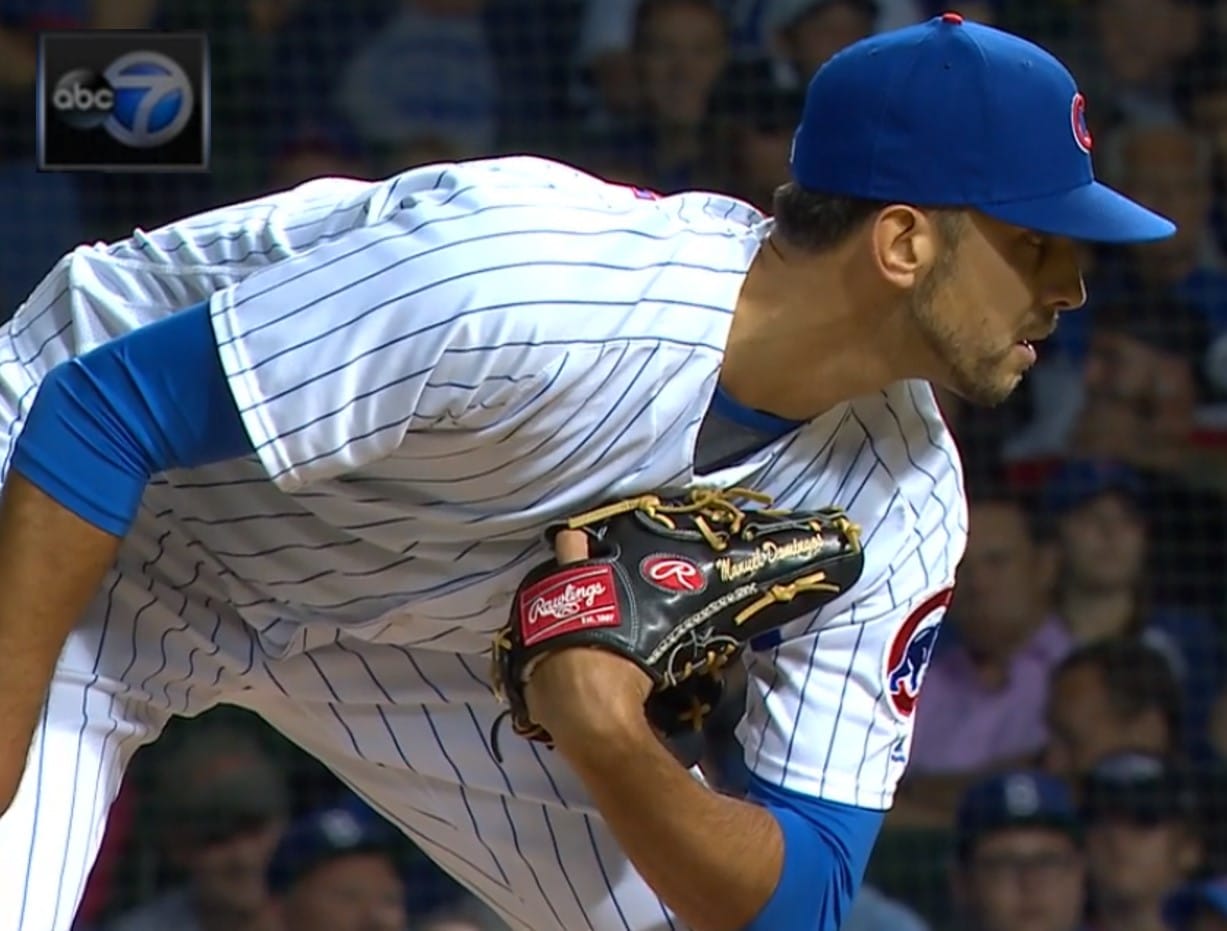
Washington Striking First in Trade-Deadline Arms Race May Have Gotten Cubs’ Attention
Every mid-year trade-deadline period is different. But the last few years, each has had its defining elements. In 2015, the eventual World Series opponents both traded for key bats. The Royals got Ben Zobrist, and the Mets landed Yoenis Cespedes.
In 2016, the Cubs and Indians outbid the field for the best available relievers in Aroldis Chapman and Andrew Miller. And last year, the Astros and Dodgers nabbed the two best starting pitchers in Justin Verlander and Yu Darvish. In fact, the Astros probably don’t make the World Series without Verlander. If the Dodgers had acquired Verlander instead, they probably reign now as defending champions instead of Game 7 runners up.
This year, the Nationals not only struck first but probably set this year’s theme as an arms race for back-end bullpen depth. By acquiring Royals closer Kelvin Herrera (1.05 ERA, 0.818 WHIP, 11.0 K/9), they’ve gone from good to great with a bullpen already anchored by Sean Doolittle’s breakout season (1.47 ERA, 0.554 WHIP, 14.33 K/9).
It’s a good bet this theme will continue through to the July 31 trade deadline. After all, most of the best teams (except the Yankees) already feature rotations with fairly set front fours. This includes the Cubs, despite Darvish’s early injury and performance issues. So the Herrera trade probably caused the Cubs’ front office to take note in several ways.
First, the Nationals taking a top relief arm off the market early adds pressure on the Cubs to target their own bullpen upgrades sooner versus later. Second, and more positively, the Nats gave up just B-level and lower prospects, which sets the market in a range better better suited to the Cubs’ less stocked cupboard of trade assets.

Last, the Cubs’ split doubleheader Tuesday exposed how thin the team is on dependable late-inning, high-leverage arms. Yes, the Iowa shuttle has supplied a nice stream of disposable eaters of middle and extra innings. But when Brandon Morrow is unavailable and Steve Cishek gets used early in a game, Joe Maddon has no options he would trust if this were the playoffs.
So relief reinforcements are needed. Of course, one hopes with the right amount of rest for Morrow, he can still be relied on to log key playoff innings. But this will require Joe Maddon to no longer pitch Morrow three days in a row, as he did from May 31 to June 2 in the Mets series.
Cishek has been ridden even harder. Not only has Maddon used the sidewinder in back-to-back-to-back games once so far, he’s also pitched Cishek three times in four days on four occasions and in both ends of a double-header twice.
This puts Cishek on pace to challenge the all-time Cubs record for pitching appearances in a season (84). That’s a concern because Cishek’s career high is 69 appearances set in 2013 during his age-27 season. Maddon also tends to overuse his bullpen in the regular season and leave relievers like Travis Wood, Justin Grimm, Pedro Strop and Mike Montgomery too gassed to be trusted with playoff leads.
The front office is playing the trading market coy so far, saying they aren’t sure they will even need upgrades anywhere on their roster. Call this playing poker and hoping to keep trade prices down. But the Nats’ early trade for Herrera should caution the Cub from slow-playing the market too much.
And it’s an open question who they’d most prize at this point. Do they go with a Zach Britton rental? Or do they try to find a younger, more controllable bullpen asset knowing he will cost more in trade? And who do you part with in return? Do you even consider flipping Montgomery’s excellent starting performance for that strong, young arm, especially knowing Monty’s difficulties returning to the bullpen after logging 130 swingman innings last year?
Perhaps all answers will depend on how well both Darvish and Carl Edwards Jr. progress in their respective rehabs. Fingers crossed that getting those answers don’t drag on too long as the midyear trade market is now officially open for business.

